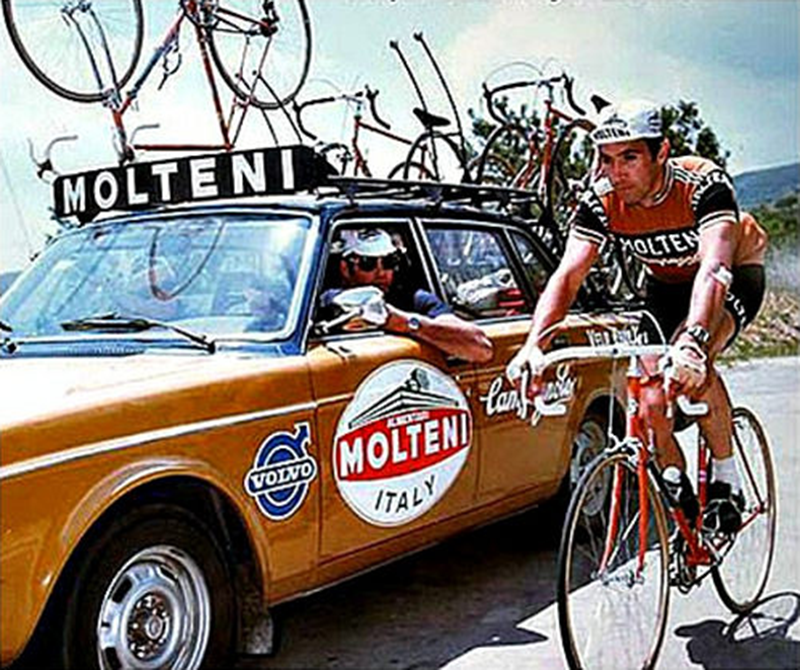Defining Moments: Radio Silence

Robots. Automatons. Modern professional cyclists. I am tempted to say these three terms are interchangeable, but I know that’s not right because a “robot” endeavors to convey the impression that it acts of it’s own intent, whereas automatons and professional cyclists are merely self-operating machines.
It is difficult for a Velominatus to look at old cycling photos and not have their minds wander to days gone by when racing was inspiring, unpredictable and, above all, courageous. Take this photo: it looks like Hinault has just attacked so hard that Joop Zoetemelk’s eyebrows got dropped. The Guns of Navarrone have been fired and it is clear from the look in his eyes that Hinault reckons he’s got two options: continue the attack until he’s worn the tape off his bars and dropped the two Dutchman clinging to his draft, or die. Obviously he favors the first option.
This year’s World Road Race Championships distinguished itself from the other races this season in two principle ways. First, it put on display some of the most courageous and exciting racing I’ve seen in ages. Second, it was held without the use of race radios. I’m not the first one to say it, but in my estimation, the lack of radios directly fed into the quality of the racing that saw the riders demonstrate that they can still show initiative, patience, cleverness, and loads of Rule #5 without having instructions yelled in their ear.
The argument for allowing race radios generally revolves around safety concerns for the riders, citing improved communication about road conditions, crashes, and any other hazards one might encounter during a bike race. The argument against radios mostly centers on the fact that they help make races less exciting by taking the tactical decisions away from the riders and placing them in the hands of the Directeurs Spotif who instruct their riders based on loads of realtime data available from inside the team car. Like most things, this matter is probably a much more complicated one than it appears on the surface, but I intend to ignore all the “facts” or “reasons” why this might be the case and instead focus on the points that are easy to think of and support my viewpoint.
The finale of the Elite Men’s Road Race was sparked by Phillipe Gilbert big-ringing it up the last climb. Sure, you can do that with a radio, but if you did you can bet your DS would be peppering you with statistics that show a correlation between riding in a big gear and knee injuries. I don’t need to tell you that kind of information can be very distracting when you’re racing.
Behind, the chase was led by an impressive Cadelephant who showed no consideration whatsoever for riding a “smart race” and instead grabbed the race by the short hairs and gave it the berries. No one telling them to look around for help, no one telling them the bunch was bearing down from behind. Just execution of one of the most simple principles in cycling: to go faster, you push harder on the pedals. The rest of the guys in the move did what they could to hold the wheel in front of them and contribute to the pace when possible. No games, no passengers, just full gas until the bunch plucked them up like a falcon does a field mouse.
There were no robots to be seen, and I have a feeling it might have been a refreshing change for the riders, too. It didn’t revolutionize the race – all the big names still made the big moves and the bunch still caught the break, – but the racing showed something we haven’t seen in quite a while: courage, guts, and glory.

